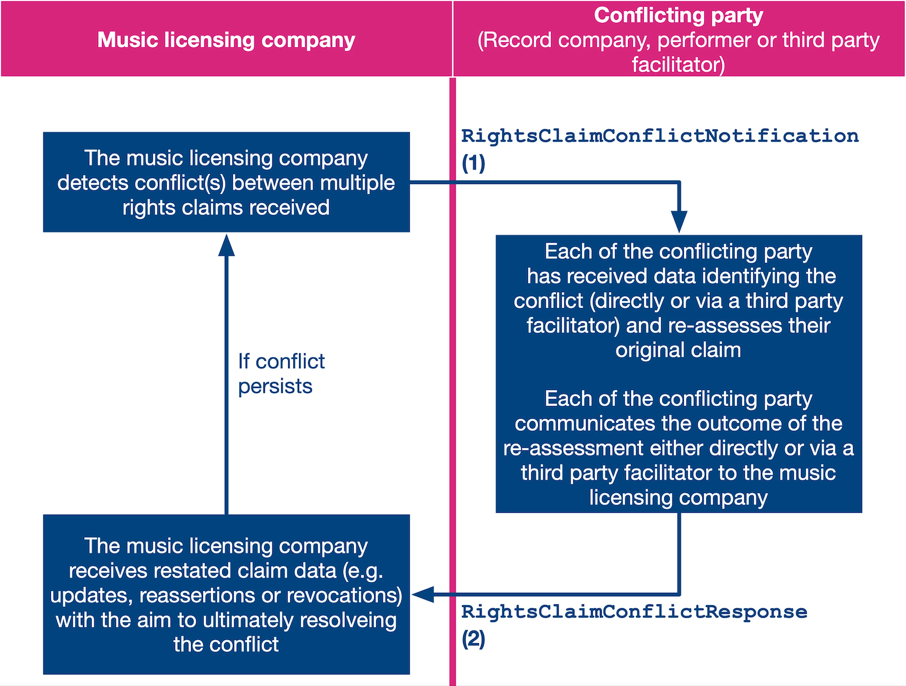5.1 Introduction
The message protocols by which a message sender actually communicates an individual message created in accordance with this part of the RDR standard to a message recipient are defined in Part 1 of the RDR standard (RDR-C).
Figure 1 below shows the choreography for the communication of the messages defined in this part of the RDR standard. These two messages are defined separately in Part 1 of the RDR standard (RDR-C).
Figure 1 – Choreography for this part of the RDR standard messages
Table 1 below summarises the data exchange choreography. The table also indicates who sends which message to whom in relation to arrows 1 and 2 in the above diagram. Further details describing the choreography outlined in Figure 1 are provided in Clause 5.2.
Message Name | Initiating Event | Sender | Recipient | |
|---|---|---|---|---|
1 |
| A music licensing company has detected a rights conflict and wishes to communicate the conflict to the conflicting parties. The music licensing company may have detected the conflict on receipt of a | Music licensing company | Conflicting parties or third-party facilitator acting on behalf of one or more of the conflicting parties |
2 |
| A conflicting party has reviewed its claim relating to the conflict detected by the music licensing company that sent the
| Conflicting party or third-party facilitator acting on behalf of one or more of the conflicting parties | Music licensing company |
Table 1 – Messages in this part of the RDR standard
This standard does not define any business processes beyond what is defined in this clause. Individual music licensing companies’ internal business processes may for example include proof of claim, especially when more than one party maintains their rights claim in the same territory.
